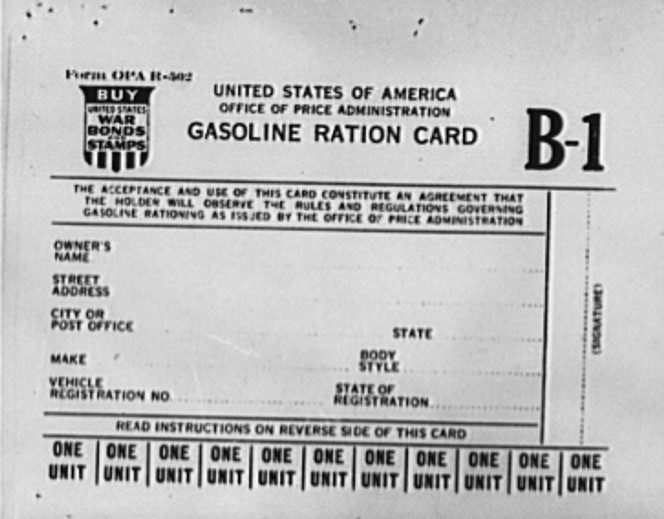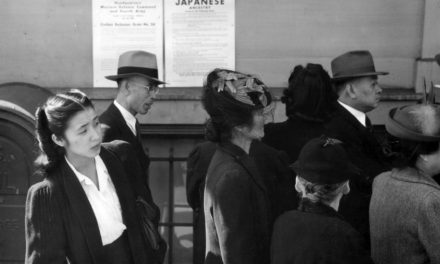You can’t buy shoes. You need a coupon book to buy a limited supply of groceries for the week. And your neighbor was arrested for black market oil books. All of this means one thing: rationing is here and it is here to stay, at least until the end of the war.
There are shortages across the country in multiple industries due to the number of products that are required to fulfill the needs of the military in Europe and the Pacific, as well as the allies of the United States. And while some industries have been left untouched, Americans are finding out rather quickly that despite surpluses now, they need to prepare for shortages to come later, which is where rationing comes in.
As of this moment, coffee, sugar, processed foods, gasoline and oil, and tires are all being rationed. Surprisingly, the country that is so used to being able to have anything it wants at a moment’s notice is handling rationing with very little pushback.
Consumption of sugar, canned food, fresh fruit, and fish has decreased since 1942, while consumption of chicken, milk and corn has gone up. In other words, people are still receiving a nutritious diet despite rationing.
That’s not to say that every American is passing the test of will that comes with rationing. A black market has already appeared.
In a telegram to Secretary of Agriculture Claude Wickard, the New York State Food Merchants Association expressed concern about “foodleggers” that are “graduates of the prohibition era,” according to the organization’s president, Patsy Dagostino.
“The ceilings on fresh vegetables are an open invitation to black market operators to enter this field,” the telegram said. “The only solution of the problem, as long as OPA [Office of Price Administration] cannot set prices on all commodities at the farmer’s level, is to allow each level of distribution a fixed percentage of mark-up over its cost.”
If there’s one thing Americans struggle to live without, it’s coffee. It’s hard to walk more than a block in a major city in the country without passing a coffee stand or a coffee shop. But that is one of the hardest-hit areas of the economy due to the number of merchant ships that are being used for military purposes instead of importing coffee products from Brazil.
The Good Neighbor policy, which is designed to prevent hostile neighbors south of the United States border in Latin America, includes a treaty with Brazil where the United States was to purchase 11 million bags of coffee in 1942. But the country only imported 7.8 million bags of Brazilian coffee.
According to Brazilian coffee officials, the U.S. should not be rationing coffee and the shipping shortage should not exist; they claim that a smarter way of packing the ships would solve the issue. The Latin American nation has suggested reducing the amount of iron that it exports to the U.S. and instead loading those ships with extra bags of coffee. In other words, instead of packing a ship loaded with 7,000 tons of iron ore to send to America, a ship could be loaded with 6,000 tons of iron ore and 1,000 tons of coffee which translates to 15,000 bags of coffee.
Another product Americans seem to be struggling to live without is gasoline, which went into rationing almost from the start of the war so that it could be used for trucks, planes, boats. Without gasoline, the economy slows as well with Americans unable to get to and from the vacation spots, the ballpark, the museums, and the landmarks. All of these areas of the economy have been negatively affected by the ban on pleasure driving.
The area being affected the most is the national parks and landmarks, which have seen a dramatic drop in attendance since the start of the ban. Take Mount Vernon for example, where every year close to a million people visit the estate of the nation’s first president. In 1941, before the attack on Pearl Harbor, 875,000 visitors paid homage to George Washington. By the end of 1942, the number shrank by over half a million, down to 250,000 visitors.
Most of the tourist destinations in the nation’s capital on the other hand, have seen an uptick or no change in visitors. The Lincoln Monument and the Washington Monument both have seen about the same number of tourists. The one location in D.C. that hasn’t seen many visitors this past year is the U.S. Capitol building.
“You didn’t use to see a parking space in six blocks around,” according to a guard who works the grounds. “Now, sometimes you don’t see a car in six blocks.” The average number of sightseers a day used to average 16,000, but the location and lack of public transportation near the Capitol leaves the daily average of visitors around 500 people per day.
As with food, there is a black market for oil and gas. In Philadelphia, the wife of a city policeman was arrested after being accused of selling gas rationing books that have an alleged of 300,000 gallons. While serving the warrant, officials from the OPA and U.S. Marshals claimed that they saw an envelope fall from the second floor of the house and found the books inside.
The transportation sector appears to have one of the larger black markets, with another coming to light in the form of a tire market, which has been thrust into the forefront due to a rubber shortage. In Philadelphia, a federal grand jury is deciding whether to indict 100 people for being a part of a tire ring.
Sources:
Egan, Charles E. “Nation Used To Abundance ‘Kicks’ Little At Rationing.” The New York Times (1923-Current File), Feb. 28, 1943. Pg. E10.
Garcia, Frank M. “Brazil Sees A Way To Give US Coffee.” The New York Times (1923-Current File), Jan. 18, 1943. Pg. 17.
“Food Black Market Is Imminent In City, Wickard Is Warned.” The New York Times (1923-Current File), Feb. 28, 1943. Pg. 1.
“How America Has Fared In 13 Months Of Rationing.” The Washington Post (1923-1954), Feb. 4, 1943. Pg. 4.
“Indictment Of 100 In Tire Ring Sought.” The Philadelphia Inquirer Public Ledger (1943-1969), Feb. 10, 1943. Pg. 12.
“Policeman’s Wife Held On Charge of Selling Gas Rationing Books.” The Philadelphia Inquirer Public Ledger (1943-1969), Feb. 10, 1943. Pg. 12.
“Rationing Cuts Attendance At Shrines.” The Washington Post (1923-1954), Feb. 7, 1943. Pg. 8.
“Rationing Made Easy.” The Washington Post (1923-1954), Feb. 17, 1943. Pg. B3.





